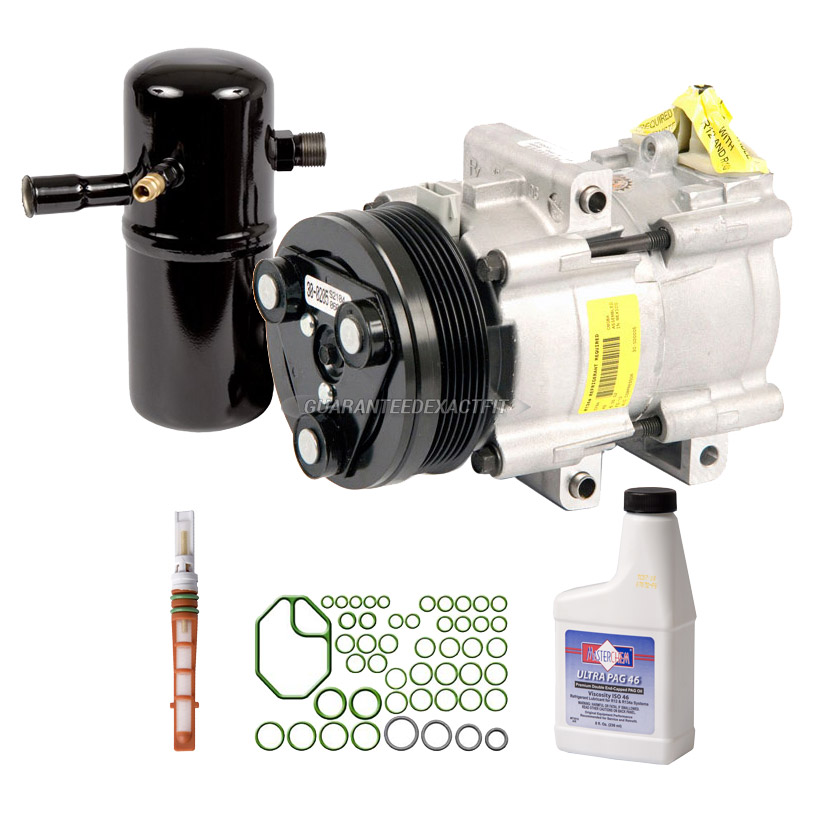

- #Automotive a c compressor repair full#
- #Automotive a c compressor repair free#
- #Automotive a c compressor repair windows#
You will be able to view shipping costs during checkout.

Shipping to Alaska and Hawaii has shipping costs that are determined by weight and location.
#Automotive a c compressor repair free#
We'll ship your order out fast, and if your order totals $75 or more, shipping is free to lower 48 states. But what really makes us stand out from the competition is our expert staff standing by to provide answers to any questions you might have. Our secure ordering system makes it easy to find the right parts. We'll deliver the parts you need at prices you'll love.
#Automotive a c compressor repair full#
All our auto AC parts are guaranteed against manufacturer defect for a full year after purchase. The difference between the two is that fixed displacement compressors should periodically disengage their clutches (they should do so whenever the minimum suction pressure value or evaporator's temperature is reached) and engage them again after some time (whenever the suction pressure or evaporator temperature increase again above the minimum threshold).Auto Air Online offers a full line of OEM and aftermarket automotive air conditioning parts at wholesale prices direct to the public and to automotive repair shops.

In addition, the same behaviour regarding engine load with respect to evaporator's load can, to some extent, be noticed even with fixed displacement compressors. If they don't, something is wrong within the system. If, instead, you close all windows, keep the cabin's blower fan at minimum speed (and, if you have ATC, set the temperature to the minimum value and the ventilation to the minimum speed, so that the air won't be heated up by the heater matrix increasing the load on the evaporator unlike with externally controlled compressors, internally controlled compressors always aim to reach a fixed evaporator's temperature, so air temperature can't be influenced by varying the amount of refrigerant pumped across the system) and turn recirculation on, you should immediately notice less engine load and therefore a faster engine reaction (since the decreasing evaporator temperature and, in turn, TXV opening, lowers the suction pressure down to the point that the swashplate angle reduces and the compressor begins destroking and pumping almost nothing through the system, until the system attains an equilibrium).įorgot to add that unlike fixed displacement compressors, variable displacement compressors equipped with clutches should be always rotating and pumping (more or less as described, but always pumping something) as long as the HVAC system is switched on in the AC (or defrost, if the system is set to turn the AC compressor on in defrost mode) mode.
#Automotive a c compressor repair windows#
When it increases, the angle begins increasing.īasically, in a hot summer day, provided that the system is working properly and charged up to specs and that you have a clean cabin filter, you can see the compressor's internally controlled variable displacement mechanism in action with these experiments: if you keep the blower at the maximum speed (Or the automatic temperature control at minimum temperature, without setting the blower speed, so that the fan reaches maximum speed), you have all windows open and you have recirculation off, you should notice more load on the engine since the evaporator won't cool enough and therefore the compressor works to max capacity and moves all the refrigerant vapour it can around the system. In layman's terms, when the suction line's pressure decreases, the swashplate angle decreases, until it reaches a minimum. There's a mechanical control valve inside the compressor, which senses the suction line pressure and begins acting on a pressure differential and therefore an equilibrium of forces inside the compressor once a certain suction line's pressure and therefore evaporator temperature is reached. In an internally controlled variable displacement compressor, the wobble/swash plate angle (and, therefore, the pistons stroke) is determined by the evaporator's temperature and, hence, TXV opening degree and suction pressure (therefore, a pressure switch on the suction line or an anti-icing sensor isn't required, unlike with a fixed displacement compressor). Since this variable displacement compressor features only a clutch coil cable and no solenoid valve cables, it's "internally controlled", that is, it doesn't require any control at all from an external source to operate (this kind of variable displacement compressor necessarily requires a clutch, otherwise the AC system would basically be always on instead, the CSE613, since it's an externally controlled compressor, that is, the swash plate angle is controlled by a solenoid valve, in turn controlled by a signal fed by a control unit, doesn't require one).


 0 kommentar(er)
0 kommentar(er)
